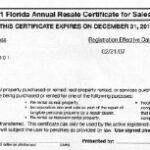Blog
How to Calculate Par Value in Financial Accounting The Motley Fool
Content
Corporations can issue no-par stocks if they are not legally required to issue common stock with a par value. The par value of a bond will either be its face value or its value upon maturation. The amount of common stock in a company can be calculated on the balance sheet after it gives out no-par common stock using the information found in their annual report.

The purpose of the notation is to allow investors to see how the split took place and the change in the individual par value. When a stock sells, it will be issued at its actual value and not the stated par value. The most https://kelleysbookkeeping.com/ common reason for a change in par value is a stock split. During a split, the total par value will actually remain unchanged. The individual par value, however, will be cut in half in a standard two-for-one stock split.
Importance of Par Value of Share
Sometimes the state will just go ahead and assign you a value if you don’t list one. Rhode Island, for instance, will assign a value of $0.01 per share. In a handful of states, your filing fee to start your corporation will vary depending on the par value you select.

Some states allow corporate stock to be issued with no par value. In this event, «no par value» should be printed on the stock certificates. Purchasers of no par value shares don’t have to worry about being liable to corporate creditors if they pay too little for the shares. For accounting purposes, the entire purchase price for no par shares is credited to the common stock account, unless the company decides to allocate a portion to surplus.
Legal Liability of Par Value
Par value is the face value of a bond and determines a bond or fixed-income instrument’s maturity value as well as the dollar value of coupon payments. The market price of a bond may be above or below par, depending on factors such as the level of interest rates and its credit status. The par value for a bond is often $1,000 or $100, the usual denominations in which they are issued. Similar to the coupon rate and par value of bonds, corporations issue preferred stock with a dividend rate calculated as a percentage of the face value. Sale of equity is one of an entity’s major financing activities and any cash brought by it into the business is categorized as such while drafting a statement of cash flows. The line items used for its reporting are “issuance of common stock“, if the common shares are sold, and “issuance of preferred stock“, if the preferred shares are sold.
- The par value, however, is commonly unrelated to a stock’s market price.
- A similar startup went public at $20 a share and now trades at $40.
- People who own shares of common stock in a publicly traded entity or may be considering purchasing or issuing common stock from a small, private company need to understand its valuation.
- The shares in a corporation may be issued partly paid, which renders the owner of those shares liability to the corporation for any calls on those shares up to the par value of the shares.
- Stock splits are events that increase the number of shares outstanding and reduce the par or stated value per share.
- If your incorporated business proves successful, your shares should become worth far more than their par value.
- However, when it reaches its maturity date, the bondholder is paid the par value regardless of if the purchase price.
In the first example, we succeeded in calculating the par value on a per share basis. Now, let us assume that from the equity section of a company’s balance sheet, the par value per share is $2 and the number of common stock issued is 6,495,231,088. The par value is set by the company’s organization or charter documents. The par value is fixed and does not fluctuate based on the market price of the stock. Companies issue shares of stock to raise equity, and those that issue par value stocks often do at a value inconsistent with the actual market value. This adjustment allows companies to minimize their and the shareholders’ contractual obligations, as par value carries a binding contract between an organization and its shareholders.
Example of Par Value for Bonds
Stock dividends are recorded by moving amounts from retained earnings to paid-in capital. A small stock dividend (generally less than 20-25% of the existing shares How To Calculate Par Value Of Common Stock outstanding) is accounted for at market price on the date of declaration. A large stock dividend (generally over the 20-25% range) is accounted for at par value.
- Since there’s not much of a market for stock in your startup, the analyst values its stock at a big discount to Salesforce’s share price.
- In addition, franchise taxes for large amounts of no par stock (in excess of 5,000 authorized shares) can prove to be very expensive.
- Notice how the accounting is the same for common and preferred stock.
- If on the other hand, this purchaser pays $5,000, then he will owe the corporation $5,000.
- When you achieve them, investors will pay some multiple of $1 at the next funding round.
And over time, you slowly begin to realize that even if par value is an outdated concept, your corporation’s par value has real—and sometimes significant—effects on your business. Calculate the total amount of a cash dividend of $0.16 per share. Even though par value may not be the price you pay for a security, it’s still important to be aware of as it may impact the amount of interest or dividend payments you receive. If you need help with a change in par value, you can post your legal need on UpCounsel’s marketplace.
To calculate the value of common stock, multiply the number of shares the company issues by the par value per share. It may seem odd that rules require different treatments for stock splits, small stock dividends, and large stock dividends. There are conceptual underpinnings for these differences, but it is primarily related to bookkeeping. The total par value needs to correspond to the number of shares outstanding. Each transaction rearranges existing equity, but does not change the amount of total equity. The market price per share, on the other hand, refers to the per share value or worth at which a company’s stock is actually traded in secondary market.

